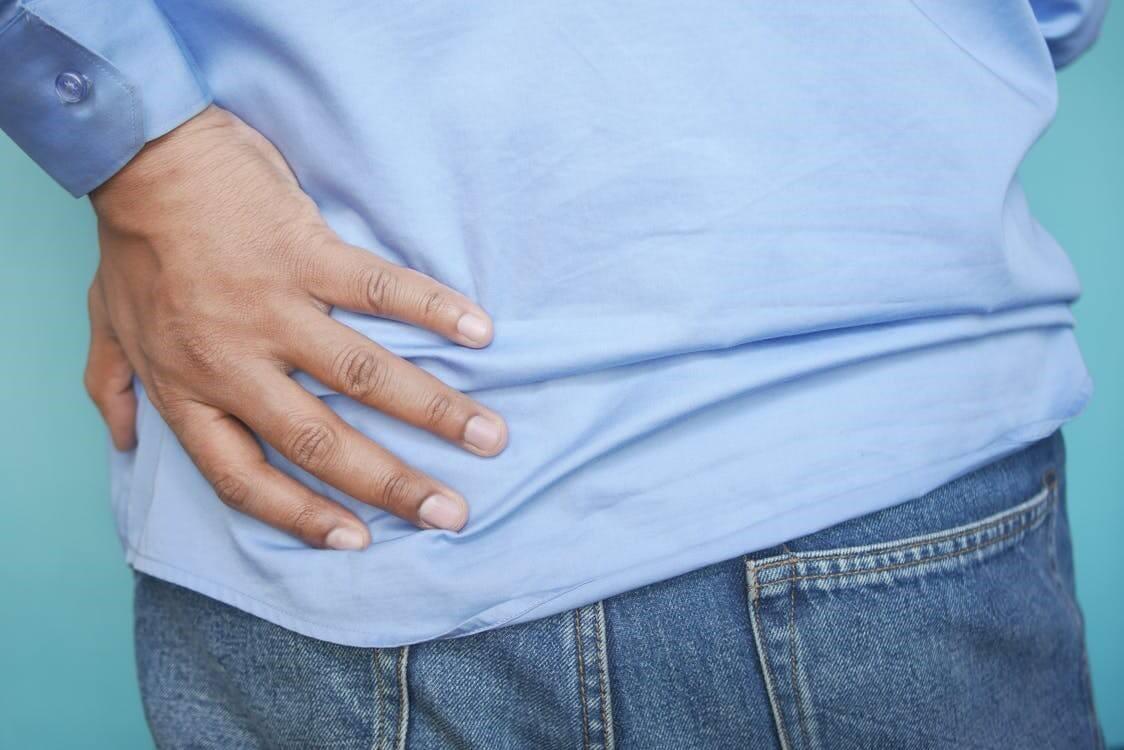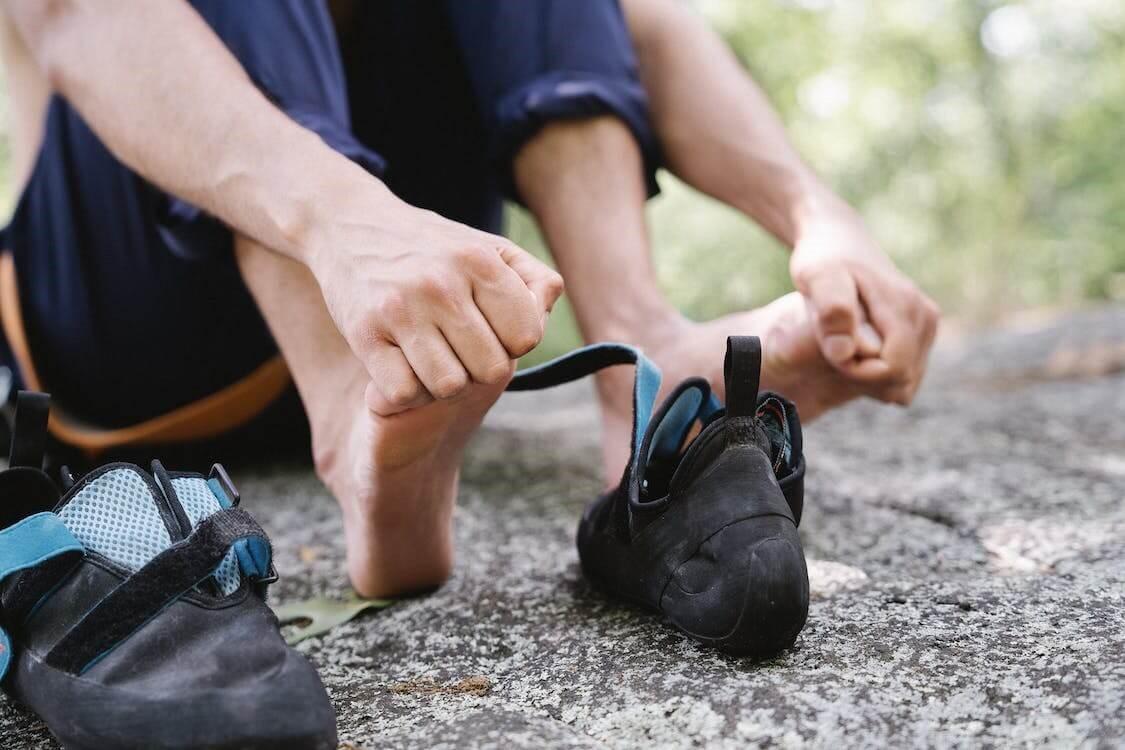Hypoglykämie
Niedriger Blutzucker
Begutachtet von Dr. Toni Hazell, MRCGPZuletzt aktualisiert von Dr. Colin Tidy, MRCGPZuletzt aktualisiert am 9. September 2024
Erfüllt die Anforderungen des Patienten redaktionelle Richtlinien
- HerunterladenHerunterladen
- Teilen Sie
- Sprache
- Diskussion
Ein niedriger Blutzucker (Hypoglykämie) wird oft als "Hypo" bezeichnet. Sie kann dazu führen, dass Sie sich unwohl fühlen und Ihre Fahrtüchtigkeit beeinträchtigen. Einfache Maßnahmen verringern das Risiko und ermöglichen es Ihnen, eine Unterzuckerung frühzeitig zu behandeln, bevor sie ernstere Komplikationen verursacht.
Sign up for our free 10-week Diabetes course!
Each week, we'll explore a different topic to help you better understand and manage your diabetes, including everyday living and medicines, to mental wellbeing, the latest in diabetes tech, and nutrition.
By subscribing you accept our Privacy Policy. You can unsubscribe at any time. We never sell your data.
In diesem Artikel:
Lesen Sie unten weiter
Blutzucker - was ist normal?
Unter normalen Umständen leistet Ihr Körper bemerkenswerte Arbeit, um Ihren Blutzucker (in Form von Glukose) stabil zu halten. Normalerweise schüttet Ihr Körper ein Hormon namens Insulin aus, das von Ihrer Bauchspeicheldrüse produziert wird, wenn der Blutzuckerspiegel ansteigt. Die Zellen Ihres Körpers benötigen Glukose als Brennstoff, damit sie funktionieren können. Insulin wirkt wie ein "Schlüssel", der die Tür Ihrer Zellen öffnet, um Glukose hineinzulassen. Ein anderes Hormon hilft, den Blutzucker zu erhöhen, wenn er zu niedrig ist.
Ihr Blutzucker, der in Millimol pro Liter (mmol/L) gemessen wird, liegt normalerweise zwischen 4 und 6 mmol/L, wenn Sie nüchtern sind, und bis zu 7,8 mmol/L zwei Stunden nach einer Mahlzeit. Diabetes wird auf der Grundlage eines erhöhten Blutzuckerspiegels diagnostiziert.
Was verursacht eine Hypoglykämie?
Menschen mit Typ-1-Diabetes brauchen Insulin in Form von Spritzen, weil sie kein eigenes Insulin produzieren. Menschen mit Typ-2-Diabetes brauchen manchmal Insulin, wenn ihr Blutzucker mit anderen Tabletten nicht kontrolliert werden kann. Wenn Sie Insulin spritzen müssen, hängt die Menge des benötigten Insulins von vielen Faktoren ab, unter anderem davon, wie viel Sie gegessen haben. Wenn Sie mehr Insulin als nötig spritzen, kann Ihr Blutzuckerspiegel unter den Normalwert sinken, was zu einer "Unterzuckerung" führt.
Das gilt auch für einige Tabletten, die bei Typ-2-Diabetes eingesetzt werden, insbesondere Sulfonylharnstoffe, Nateglinid und Repaglinid, die den Körper dazu bringen, mehr Insulin zu produzieren.
Hypoglykämie tritt bei Menschen ohne Diabetes viel seltener auf. Zu den möglichen Ursachen gehören:
Übermäßiger Alkoholkonsum.
Einige kritische Krankheiten, z. B. schwere Lebererkrankungen, Infektionen, Nierenerkrankungen und Herzerkrankungen.
Langfristiges Aushungern.
Insulinüberproduktion, z. B. bei einem seltenen Tumor der Bauchspeicheldrüse, dem Insulinom.
Einige Hormonmängel, z. B. bestimmte seltene Nebennieren- und Hypophysentumore.
Lesen Sie unten weiter
Symptome einer Hypoglykämie
Wenn Ihr Blutzucker unter etwa 4 mmol/L fällt, kann es zu Beschwerden kommen:
Sie fühlen sich schwach oder müde und haben Hunger.
Zittriges Gefühl und Schweißausbrüche, kalte, klamme Haut.
Gereiztheit und Konzentrationsschwäche.
Kopfschmerzen und Unwohlsein.
Herzklopfen.
Verschwommene Sicht.
Wenn Ihr Blutzuckerspiegel weiter sinkt, können Sie sich entwickeln:
Verwirrung und Schläfrigkeit.
Schlechte Koordinierung.
Schwierigkeiten beim Sprechen.
Irrationales Verhalten.
Zusammenbruch und Bewusstlosigkeit.
In sehr schweren Fällen kann eine Hypoglykämie tödlich sein.
Wie man eine Hypoglykämie verhindert
Wenn Sie an Typ-1-Diabetes erkrankt sind, wird man Ihnen oft raten, Ihren Blutzuckerspiegel fast genauso gut einzustellen wie jemandem, der nicht an Diabetes erkrankt ist, vor allem, wenn Sie jung sind und keine Komplikationen durch Diabetes oder andere Krankheiten haben. Der Grund dafür ist, dass ein hoher Blutzuckerspiegel auf lange Sicht zu Schäden an Nieren, Augen, Nerven, Füßen und Herz führen kann. Wenn Sie Ihren Blutzucker streng kontrollieren, erhöht sich jedoch das Risiko von Unterzuckerungen.
Verringerung des Hypo-Risikos
Es gibt jedoch viele Maßnahmen, die Sie ergreifen können, um das Risiko einer Unterzuckerung zu verringern. Dazu gehören:
Keine Zwischenmahlzeiten oder Mahlzeiten auslassen oder aufschieben.
Lernen Sie, welche Insulindosis Sie für eine bestimmte Menge an Kohlenhydraten benötigen.
Anpassung des Insulinspiegels, wenn Sie intensiv Sport treiben.
Vermeiden von Alkohol, insbesondere auf nüchternen Magen.
Sprechen Sie mit Ihrem medizinischen Team im Voraus über Situationen, in denen Ihre normale Nahrungsaufnahme gestört ist (z. B. während des Ramadan, wenn Sie reisen oder im Schichtdienst arbeiten), damit Sie gemeinsam Ihre Insulindosis anpassen können.
Wenn Sie Sulfonylharnstoff-Tabletten einnehmen und Symptome bekommen, die Sie für eine Unterzuckerung halten, sprechen Sie mit Ihrem Team. Möglicherweise kann man Ihre Medikation ändern, denn es gibt viele alternative Behandlungen für Typ-2-Diabetes, die keine Unterzuckerungen verursachen.
Halten Sie immer einen Vorrat an zuckerhaltigen Getränken, Fruchtsäften oder Glukosetabletten bereit, damit Sie die Symptome frühzeitig behandeln können.
Kontrollieren Sie regelmäßig Ihren Blutzucker.
Blutzuckermessgeräte (Freestyle Libre) und kontinuierliche Glukosemessgeräte (CGM)
Mit Blutzuckermessgeräten und kontinuierlichen Blutzuckermessgeräten können Sie Ihren Blutzuckerspiegel überprüfen, ohne sich in die Finger stechen zu müssen. Ein kleiner Sensor an Ihrem Körper misst Ihren Blutzuckerspiegel, so dass Sie die Informationen auf Ihrem Handy oder einem anderen Gerät sehen können. Wenn Ihnen jemand bei der Betreuung Ihrer Diabeteserkrankung hilft, kann auch dessen Mobiltelefon mit dem Gerät verbunden werden. Sowohl bei einem CGM als auch bei einem Blutzuckermessgerät (FreeStyle Libre2) können Sie auch einen Alarm einstellen, der ertönt, wenn Ihr Blutzuckerspiegel zu niedrig oder zu hoch ist.
Blutzuckermessgeräte und CGMs ermöglichen es Ihnen, Ihren Blutzuckerspiegel jede Minute des Tages und der Nacht zu überprüfen. Dies hilft Ihnen zu verstehen, wie Nahrung und Aktivität Ihren Blutzuckerspiegel beeinflussen.
Lesen Sie unten weiter
Wie oft sollte ich meinen Blutzucker kontrollieren?
Nicht jeder Typ-2-Diabetiker muss seinen Blutzucker selbst messen - dies wird in der Regel nur empfohlen, wenn Sie Insulin spritzen oder andere Typ-2-Diabetes-Medikamente wie Sulfonylharnstoffe einnehmen; ist dies nicht der Fall, wird Ihnen Ihr Hausarzt keine Streifen und Lanzetten zur Blutzuckerkontrolle verschreiben, da dies nicht notwendig ist. Natürlich müssen Sie trotzdem regelmäßig zu Diabetes-Kontrollen gehen, bei denen Ihr Blutzucker und Ihr HbA1c-Wert überwacht werden. Der HbA1c-Wert ist ein Maß für Ihre durchschnittliche Blutzuckereinstellung in den letzten drei Monaten.
Wenn Sie Typ-1-Diabetes haben, sollten Sie Ihren Blutzucker regelmäßig kontrollieren. Ihr Arzt oder Ihre Krankenschwester wird Ihnen in der Regel empfehlen, den Blutzucker mindestens viermal am Tag zu messen, unter anderem vor jeder Mahlzeit und vor dem Schlafengehen, auch wenn Sie nicht Auto fahren.
Wenn Sie Auto fahren und Insulin oder andere Medikamente einnehmen, die eine Unterzuckerung verursachen können, empfiehlt die DVLA, dass Sie Ihren Blutzucker weniger als zwei Stunden vor Fahrtantritt und alle zwei Stunden während der Fahrt kontrollieren sollten.
Was sollte ich tun, wenn mein Blutzucker zu niedrig ist?
Eine "Unterzuckerung" wird in der Regel als ein Blutzuckerwert unter 4 mmol/L definiert. Ein nützlicher Merksatz lautet: "Fünf, nicht fahren; vier ist die Untergrenze". Mit anderen Worten: Wenn Ihr Blutzucker unter 5 mmol/L liegt, sollten Sie nicht Auto fahren. Wenn er unter 4 liegt oder Sie Symptome einer Unterzuckerung haben:
Halten Sie an, was Sie gerade tun (halten Sie an, sobald es sicher ist, wenn Sie Auto fahren, und ziehen Sie den Schlüssel aus dem Zündschloss).
Testen Sie Ihren Blutzucker, falls Sie das noch nicht getan haben.
Essen Sie sofort einige Traubenzuckertabletten oder zuckerhaltige Süßigkeiten (Gummibärchen sind ideal) oder trinken Sie Fruchtsaft oder ein zuckerhaltiges Getränk - die empfohlene Standardmenge beträgt 15-20 Gramm schnell wirkende Kohlenhydrate.
Informieren Sie alle Personen, mit denen Sie zusammen sind, damit sie Ihnen helfen können, wenn sich Ihre Symptome verschlimmern.
Entspannen Sie sich etwa 15 Minuten lang, während Ihr Blutzuckerspiegel ansteigt.
Messen Sie Ihren Blutzucker erneut. Fahren Sie frühestens 45 Minuten, nachdem der Blutzucker über 5 mmol/L gestiegen ist.
Möglicherweise müssen Sie eine weitere Zwischenmahlzeit oder eine Mahlzeit zu sich nehmen, wenn diese fällig ist - Ihr medizinisches Team kann Sie dazu beraten.
Wie kann ich helfen, wenn ich glaube, dass jemand eine Hypo hat?
Die Symptome einer Unterzuckerung können oft mit Trunkenheit verwechselt werden. Wenn Sie also jemanden sehen, der sich seltsam verhält, besonders wenn Sie wissen oder vermuten, dass er Diabetes hat, überprüfen Sie, ob er Diabetes hat:
Ein medizinisches Alarmarmband oder ähnliches.
Ein Insulin-Pen oder eine Insulin-Spritze oder ein Glukose-Testkit.
Glukosegel oder zuckerhaltige Süßigkeiten.
Dann:
Helfen Sie ihnen, sich ruhig hinzusetzen.
Wenn sie ihr eigenes Glukosegel haben, helfen Sie ihnen, es einzunehmen.
Andernfalls geben Sie ihnen zuckerhaltige Süßigkeiten, zwei Teelöffel Zucker oder ein Glas zuckerhaltiges Getränk oder Fruchtsaft (auch wenn Sie nicht sicher sind, dass sie eine Hypo haben, ist es sicherer, dies zu tun).
Achten Sie sorgfältig auf die Reaktionsfähigkeit, die Atmung und den Puls des Kindes.
Wenn es ihnen besser geht, achten Sie darauf, dass sie ihren Blutzuckerspiegel kontrollieren.
Wenn sie sich nicht bessern, rufen Sie 999 an (wenn Sie sich im Vereinigten Königreich befinden).
Patient picks for Living with diabetes

Diabetes
Diabetische Amyotrophie
Die diabetische Amyotrophie ist eine Komplikation des Diabetes mellitus. Sie betrifft die Oberschenkel, Hüften, das Gesäß und die Beine und verursacht Schmerzen und Muskelschwund.
von Dr. Philippa Vincent, MRCGP

Diabetes
Diabetische Neuropathie
Die diabetische Neuropathie ist eine Form der Nervenschädigung, die bei Diabetes auftreten kann. Diabetische Neuropathie ist eine häufige Komplikation sowohl bei Typ-1-Diabetes als auch bei Typ-2-Diabetes. Der beste Weg, einer diabetischen Neuropathie vorzubeugen oder sie zu behandeln, besteht darin, den Blutzucker und den Blutdruck gut zu kontrollieren, regelmäßig zur Diabeteskontrolle zu gehen und das Rauchen zu vermeiden. Der Ausgang einer frühen diabetischen Neuropathie kann gut sein, aber eine schwere Neuropathie ist oft mit einem schlechten Ausgang verbunden.
von Dr. Rosalyn Adleman, MRCGP
Weiterführende Literatur und Referenzen
- Diabetes UK
- Iqbal A, Heller SUmgang mit Hypoglykämie. Best Pract Res Clin Endocrinol Metab. 2016 Jun;30(3):413-30. doi: 10.1016/j.beem.2016.06.004. Epub 2016 Jun 14.
- Typ-1-Diabetes bei Erwachsenen: Diagnose und BehandlungNICE-Richtlinien (August 2015 - letzte Aktualisierung August 2022)
- Diabetes (Typ 1 und Typ 2) bei Kindern und Jugendlichen: Diagnose und ManagementNICE-Richtlinien (Aug 2015 - aktualisiert Mai 2023)
- Typ-2-Diabetes bei Erwachsenen: ManagementNICE Guidance (Dezember 2015 - zuletzt aktualisiert im Juni 2022)
Artikel Geschichte
Die Informationen auf dieser Seite wurden von qualifizierten Klinikern verfasst und von Fachleuten geprüft.
Nächste Überprüfung fällig: 8. September 2027
9 Sept 2024 | Neueste Version

Fragen, teilen, verbinden.
Stöbern Sie in Diskussionen, stellen Sie Fragen, und tauschen Sie Erfahrungen zu Hunderten von Gesundheitsthemen aus.

Fühlen Sie sich unwohl?
Beurteilen Sie Ihre Symptome online und kostenlos
Sign up to the Patient newsletter
Your weekly dose of clear, trustworthy health advice - written to help you feel informed, confident and in control.
By subscribing you accept our Privacy Policy. You can unsubscribe at any time. We never sell your data.